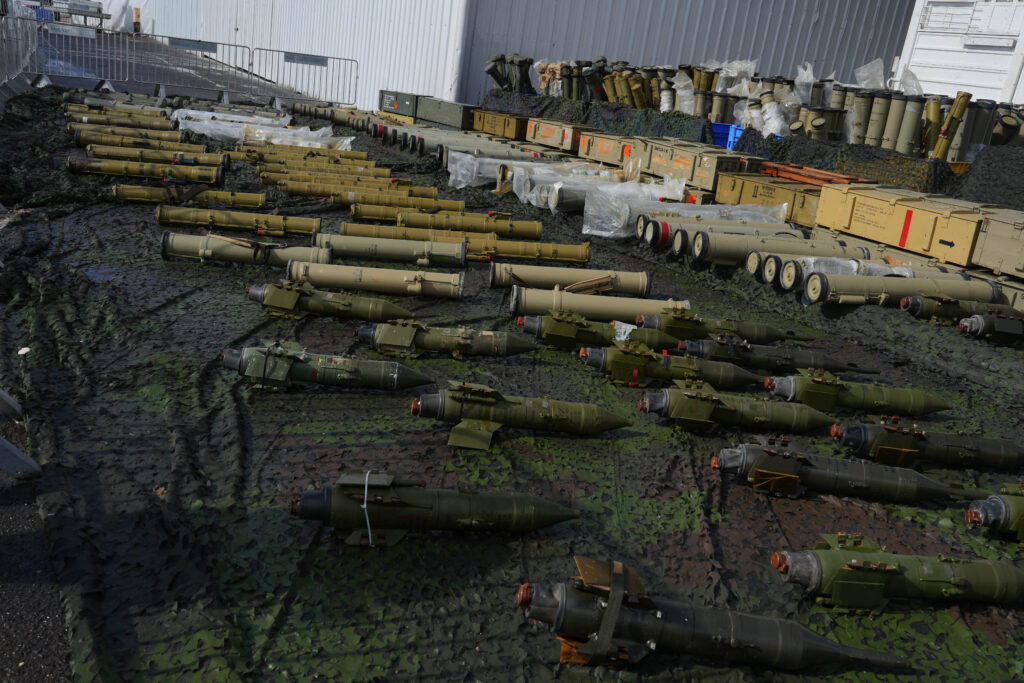As violence erupts once again in South Lebanon, a leading Middle East analyst reveals that the recently extended ceasefire agreement may be more than just a failed peace initiative – it could be an elaborate diplomatic trap. With at least 22 Hezbollah operatives killed in recent clashes and weapons caches continuing to surface along Israel’s northern border, the region stands on the brink of a major escalation that could force the incoming Trump administration into an impossible position.
Rabbi Pesach Wolicki, Executive Director of Israel365 Action and a prominent voice on Israeli security matters, argues that the timing of the ceasefire agreement is no coincidence. “This whole deal was designed to handcuff the Trump administration,” he explains. “This deal that was signed on November 26th for 60 days was designed to go just a few days into the Trump administration and that way when Trump comes into office, there’s no active war going on between Israel and Hezbollah.”
The strategic implications, according to Wolicki, are significant. “The last thing that Trump wants is for an active war to begin. So this incentivizes President Trump and his team to pressure Israel not to start attacking Hezbollah again because, again, Israel did not finish the job in wiping out Hezbollah.” Looking ahead, he warns that “the Lebanese army is not going to be protecting Israel. They’re not going to stop Hezbollah from rearming. In many cases, the Lebanese army has been helping Hezbollah out and this whole deal was really designed to make it more difficult for Israel to finish the job in destroying Hezbollah. And we’re gonna see this all coming to a head as this extension comes to an end on February 18th.”

The ceasefire agreement, negotiated by the United States and several Western nations, appears to be unraveling as multiple key provisions remain unfulfilled. The deployment of 5,000 Lebanese army troops south of the Litani River, a crucial component of the agreement, has failed to materialize. This has left a security vacuum that Israel refuses to abandon, fearing the resurgence of Hezbollah activities in the region.
Recent developments seem to validate these concerns. Channel 14 News in Israel reports that tensions have escalated as Hezbollah attempts to unilaterally force the return of residents to their former homes in the conflict zone. The IDF has responded forcefully to these violations, resulting in significant casualties among Hezbollah operatives.
Further complicating the situation is the continued presence of unauthorized weapons in the region. Israeli surveillance has uncovered multiple rocket launchers and weapons caches in South Lebanon, directly violating the agreement’s terms. The planned oversight committee, which was to include American, British, French, and German representatives, remains non-operational, leaving no formal mechanism to report and address these violations.
The towns in question, located south of the Litani River and overlooking northern Israeli communities, were reportedly built by Hezbollah and serve as bases of operation. Israeli officials argue that the returning civilians are not merely displaced residents but are intrinsically linked to Hezbollah’s operations. Video footage from the area shows numerous yellow Hezbollah flags being raised, with the organization’s television network, Al-Manar, actively covering and potentially orchestrating these returns.
The underground infrastructure in these towns, including tunnels designed for potential infiltration into Israel, remains intact. The returning residents, according to Israeli sources, include Hezbollah leadership, operatives, and their families, raising serious concerns about the resumption of hostile activities against Israel.
As the February 18th deadline approaches, the international community faces mounting pressure to address the underlying issues that continue to destabilize South Lebanon. However, with the Lebanese army’s apparent unwillingness to assert control over the region, and Hezbollah’s persistent efforts to maintain its presence south of the Litani River, the situation threatens to escalate into a broader regional crisis.
The coming weeks will be crucial in determining whether diplomatic efforts can salvage the ceasefire agreement or if the region will descend into another cycle of violence. As Wolicki suggests, the Trump administration may soon find itself forced to choose between maintaining an increasingly unstable peace and supporting Israel’s security needs – a decision that could have far-reaching implications for regional stability.




